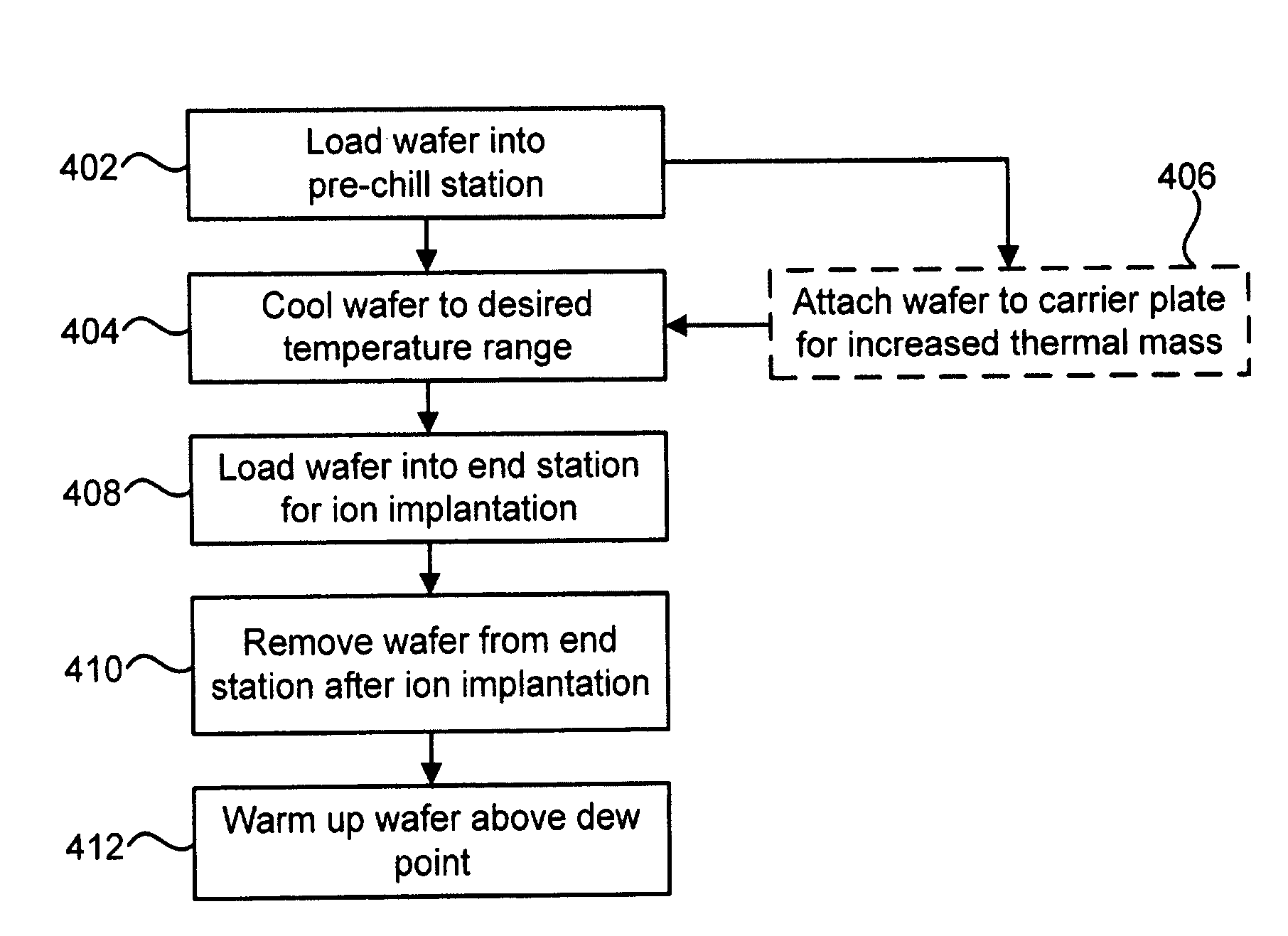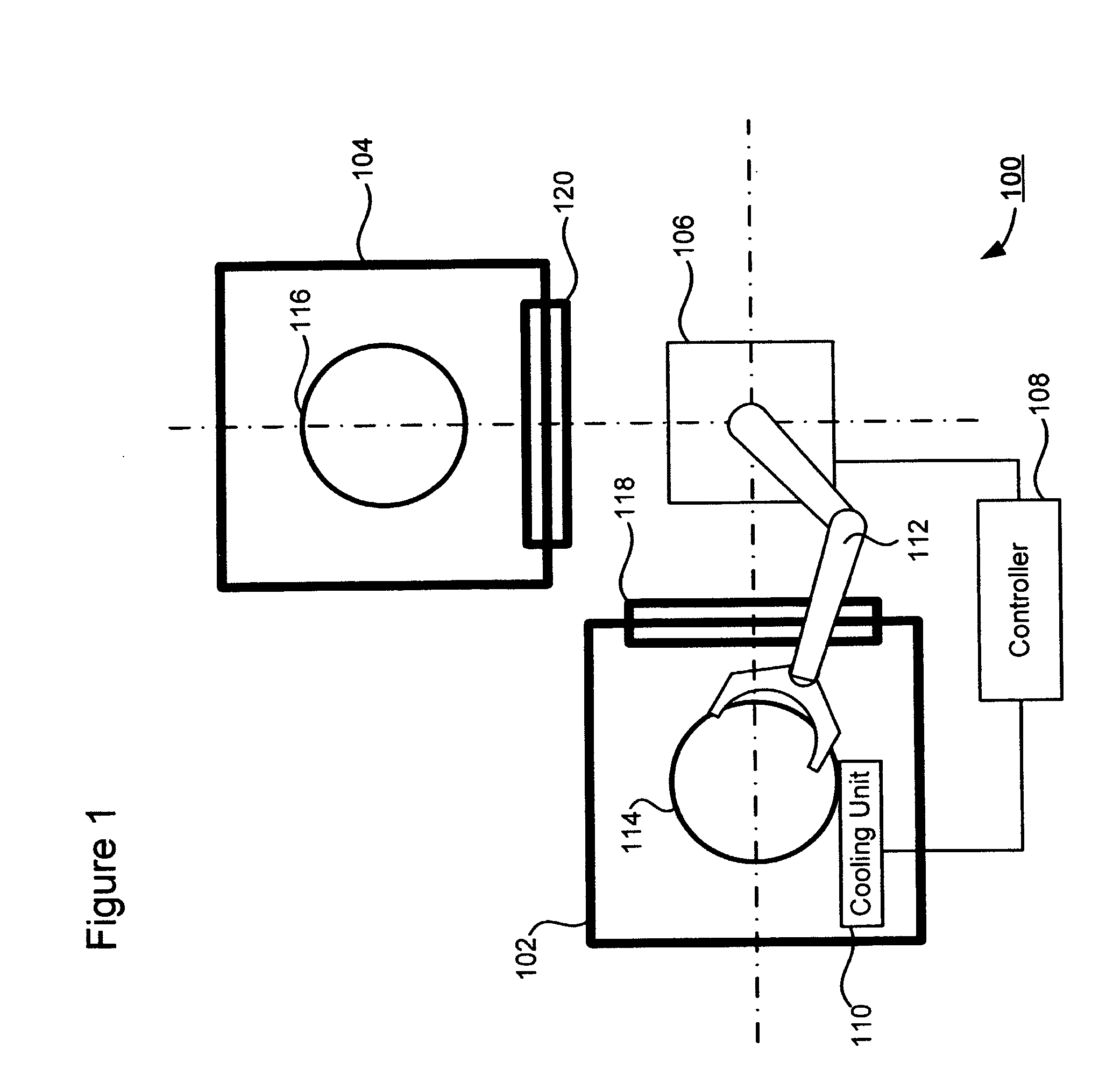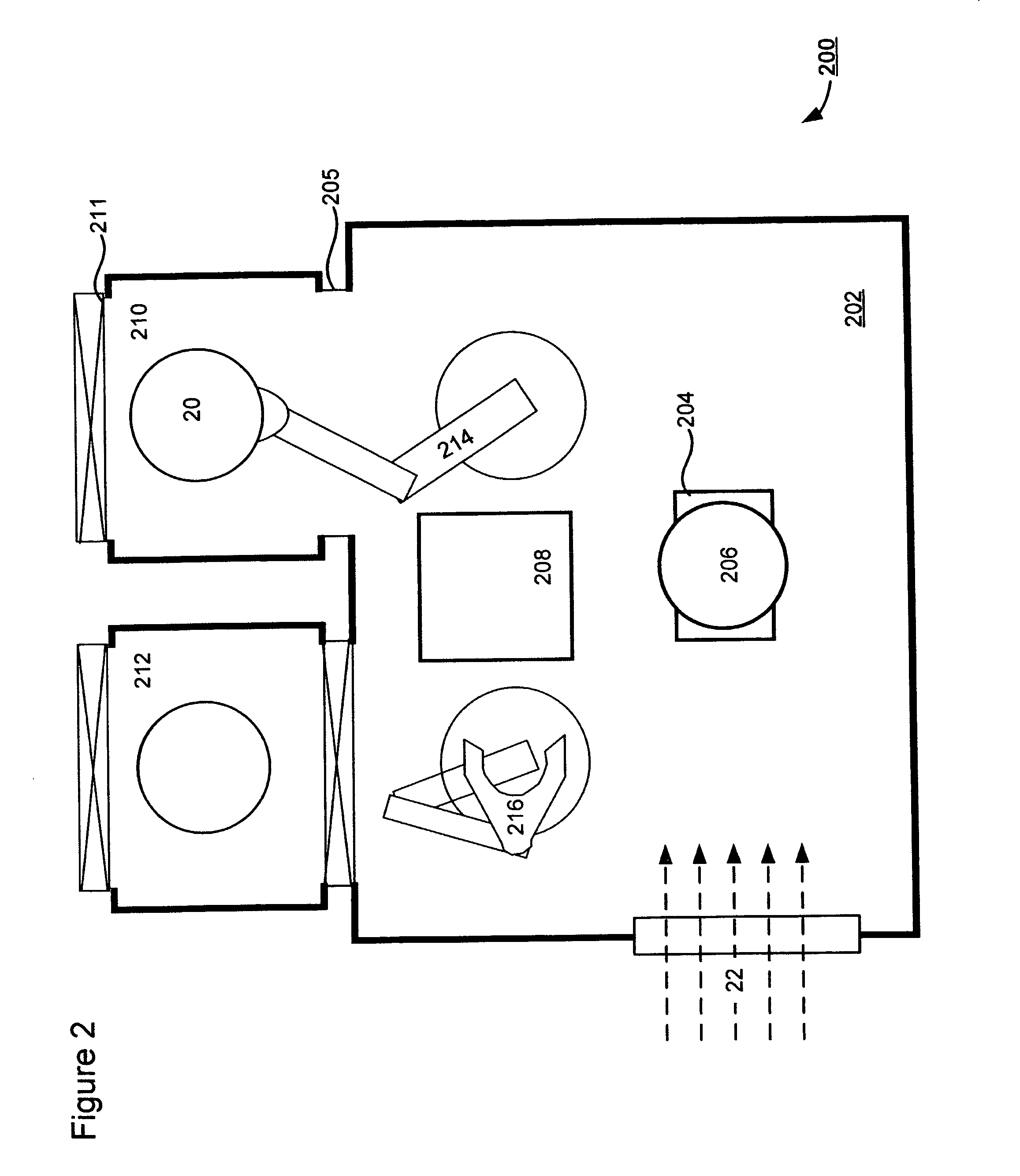Technique for low-temperature ion implantation
a technology of ion implantation and low temperature, applied in the field of semiconductor manufacturing, can solve the problems of higher dose threshold for amorphization, less than ideal shallow junctions, and more end-of-range defects, and achieve the effect of avoiding overheating the wafer
- Summary
- Abstract
- Description
- Claims
- Application Information
AI Technical Summary
Benefits of technology
Problems solved by technology
Method used
Image
Examples
Embodiment Construction
[0043]Embodiments of the present disclosure provide a technique for low-temperature ion implantation wherein a wafer may be pre-chilled to a desired temperature range before it is loaded onto a platen for ion implantation. During ion implantation, the wafer does not have to be actively or continuously cooled, and it may be thermally insulated from a wafer platen. Wafer temperature increase during ion implantation may be further mitigated by attaching the wafer to another object to achieve a larger thermal mass. The low-temperature ion implantation technique disclosed herein may be implemented for all types of ion implantation processes as well as plasma doping (PLAD) which is also referred to as plasma immersion ion implantation (PIII). Existing ion implanters may be easily modified or new ion implanters may be built to provide the pre-chilling capabilities.
[0044]As used herein, “temperature range” refers to a particular temperature value (e.g., −100° C.) or a range of temperature e...
PUM
 Login to View More
Login to View More Abstract
Description
Claims
Application Information
 Login to View More
Login to View More - R&D
- Intellectual Property
- Life Sciences
- Materials
- Tech Scout
- Unparalleled Data Quality
- Higher Quality Content
- 60% Fewer Hallucinations
Browse by: Latest US Patents, China's latest patents, Technical Efficacy Thesaurus, Application Domain, Technology Topic, Popular Technical Reports.
© 2025 PatSnap. All rights reserved.Legal|Privacy policy|Modern Slavery Act Transparency Statement|Sitemap|About US| Contact US: help@patsnap.com



